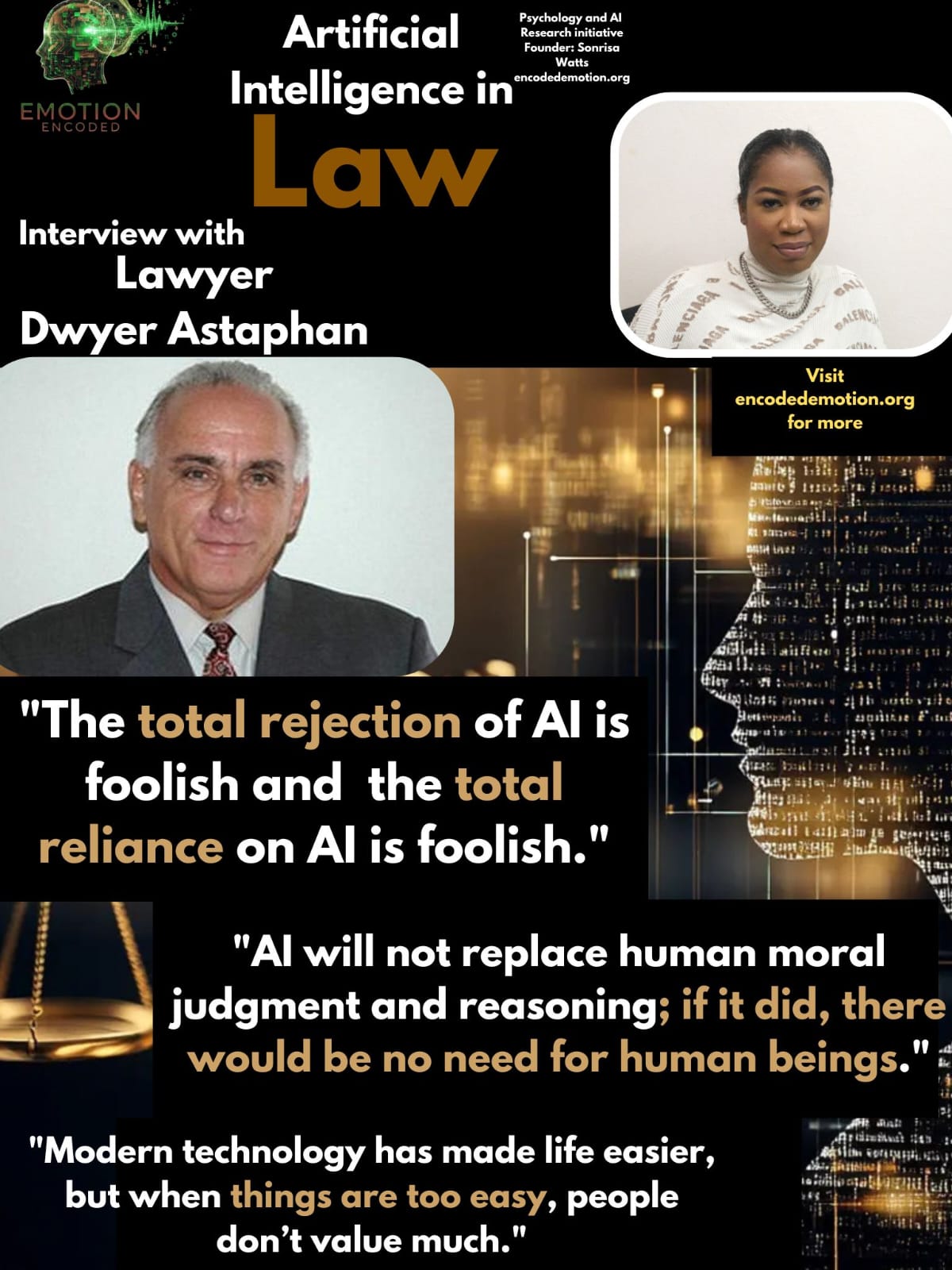Balancing Innovation and Caution:
Dwyer Astaphan on AI in High-Stakes Fields
Reflections on the promises, challenges, and human responsibilities of AI integration.

Artificial intelligence is transforming the world, from education to high-stakes fields like law and medicine. Senior Lawyer Dwyer Astaphan offers a comprehensive perspective on the promises, challenges, and responsibilities associated with integrating AI into professional practice and society. His reflections highlight the need for critical thinking, ethical oversight, and careful adaptation.
AI’s Usefulness and Dangers
“AI is extremely useful, but like everything extremely useful, it can also be dangerous,” Astaphan observes.
He emphasizes that while AI can rapidly gather and reproduce information, it is not infallible. “If I, as a lawyer, want to research a point, AI can provide useful information quickly, but I have to verify it myself,” he explains. AI may deliver correct general ideas, but dates, references, or finer details are often inaccurate because AI reproduces human-created data.
Over-reliance in Education and Society
Astaphan warns about the over-reliance on AI in education. “If you leave everything to AI, children will lose critical thinking skills,” he says. He compares current practices to the past, noting that children once memorized multiplication tables, which fostered analytical thinking. “Mathematics is at the very core of critical analysis. When humans stop learning foundational skills, actual human knowledge on a broad base is reduced,” he explains.
Reflecting on lifestyle changes over the decades, Astaphan notes, “Before television, people were more active. When I was a boy, we ate sugar in drinks, cakes, and frozen dishes, but there was very little obesity because we were physically active.” Modern devices, from TVs to cell phones, have made life easier but reduced physical activity. “When things are too easy, people don’t value much,” he adds.
He draws a parallel between over-reliance on technology and changes in human habits. “Actual human knowledge on a broad base was reduced. People became more involved in entertainment and consumerism, influenced by global culture,” he says, stressing that while technology has created amazing tools, it also requires humans to remain disciplined and thoughtful.
AI in Legal Practice
Astaphan stresses that AI should be used as a tool rather than a replacement for human judgment. “AI cannot replace moral judgment or reasoning. If it reached that point, there would be no need for human beings,” he explains. Legal professionals must verify AI-generated information because mistakes in dates, cases, or facts are possible.
He also highlights challenges around liability. “If a lawyer provides an opinion based on AI research and it’s wrong, issues of liability arise. Clients may sign disclaimers, but if you sue the lawyer, questions about international law come into play. Who do you sue? Where? How is compensation handled? It’s very complicated.”
Reluctance among lawyers, especially older practitioners, is understandable. “Some of us are not tech-savvy. We trust our judgment and experience more than AI. Neither extreme is helpful. **Totally rejecting AI is foolish. Totally relying on it is also foolish**,” he notes.
AI in the Medical Field
AI is already integrated into medical practice as a diagnostic tool. Astaphan emphasizes, “AI can assist, but professionals still verify the information.” He stresses the importance of scientific oversight to ensure that AI augments human judgment rather than replaces it.
Adapting to Technology and Jobs
Astaphan acknowledges public concern about AI replacing jobs. “AI can replace some jobs, but people should be trained to adapt. Young people should be agile, able to move between jobs, and properly trained so they don’t become irrelevant.” Countries such as Japan, South Korea, Taiwan, Singapore, and Finland have systems in place to teach adaptability and lifelong learning, while other countries face political and social challenges that hinder adjustment to technological change.
Historical Perspective and the Evolution of Technology
Reflecting on the trajectory of technological development, Astaphan traces AI to earlier innovations. “Thirty years ago, data processing was the in thing. Ten years ago, coding. Now it’s AI. AI is the accumulation of all these things. Extremely useful, but like everything extremely useful, it can also be dangerous,” he says. This historical lens underscores that society must learn from past technological shifts to integrate AI responsibly.
A Balanced Approach
Astaphan’s advice is clear: moderation and foresight are essential. “Neither total rejection nor total reliance on AI is wise. We need a balanced approach with proper regulation and cultural adaptation. AI is extremely useful, but humans must guide its integration responsibly.”